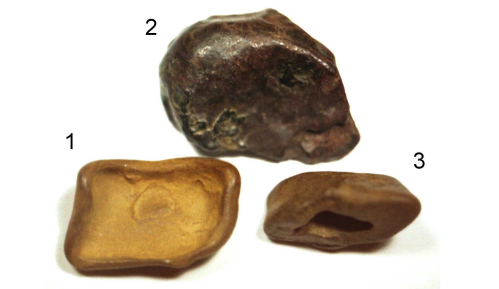
Nobody knows what exploded over Siberia in 1908, but the discovery of the first fragments could finally solve the mystery.
The Tunguska impact event is one of the great mysteries of modern history. The basic facts are well known. On 30 June 1908, a vast and powerful explosion engulfed an isolated region of Siberia near the Podkamennaya Tunguska River.
The
blast was 1000 times more powerful than the bomb dropped on Hiroshima,
registered 5 on the Richter scale and is thought to have knocked down some 80
million trees over an area of 2000 square kilometres. The region is so
isolated, however, that historians recorded only one death and just handful of
eyewitness reports from nearby.
But
the most mysterious aspect of this explosion is that it left no crater and
scientists have long argued over what could have caused it.
The
generally accepted theory is that the explosion was the result of a meteorite
or comet exploding in the Earth’s atmosphere. That could have caused an
explosion of this magnitude without leaving a crater. Such an event would
almost certainly have showered the region in fragments of the parent body but
no convincing evidence has ever emerged.
In
the 1930s, an expedition to the region led by the Russian mineralogist Leonid
Kulik returned with a sample of melted glassy rock containing bubbles. Kulik
considered this evidence of an impact event. But the sample was somehow lost
and has never undergone modern analysis. As such, there is no current evidence
of an impact in the form of meteorites.
That
changes today with the extraordinary announcement by Andrei Zlobin from the
Russian Academy of Sciences that he has found three rocks from the Tunguska
region with the telltale characteristics of meteorites. If he is right, these
rocks could finally help solve once and for all what kind of object struck
Earth all those years ago.
Zlobin’s
story is remarkable in a number of ways. The area of greatest interest for
meteor scientists is called the Suslov depression, which lies directly beneath
the location of the air blast and is the place where meteorite debris was most
likely to fall.
Dig
into the peat bogs here and you can easily find layers that show clear evidence
of the explosion. Zlobin said he dug more than ten prospect holes in the hope
of finding meteorite fragments, but without success.
However,
he had more luck exploring the bed of the local Khushmo River, where stones are
likely to collect over a long period of time. He collected around 100
interesting specimens and returned to Moscow with them.
This
expedition took place in 1988 and for some unexplained reason, Zlobin waited 20
years to examine his haul in detail. But in 2008, he sorted the collection and
found three stones with clear evidence of melting and regmalypts,
thumblike impressions found on the surface of meteorites which are caused by
ablation as the hot rock falls through the atmosphere at high speed.
Zlobin
and others have used tree ring evidence to estimate the temperatures that the
blast created on the ground and says that these were not high enough to melt
rocks on the surface. However, the fireball in the Earth’s atmosphere would
have been hot enough for this.
So
Zlobin concludes that the rocks must be fragments of whatever body collided
with Earth that day.
Zlobin
has not yet carried out a detailed chemical analysis of the rocks that would
reveal their chemical and isotopic composition. So the world will have to wait
for this to get a better idea of the nature of the body.
However,
the stony fragments do not rule out a comet since the nucleus could easily
contain rock fragments, says Zlobin. Indeed he has calculated that the density
of the impactor must have been about 0.6 grams per cubic centimetre, which is
about the same as nucleus of Halley’s comet. Zlobin says that together the
evidence seems “excellent confirmation of cometary origin of the Tunguska
impact.”
Clearly
there is more work to be done here, particularly the chemical analysis perhaps
with international cooperation and corroboration.
Then
there is also the puzzle of why Zlobin has waited so long to analyse his samples.
It’s not hard to imagine that the political changes that engulfed the Soviet
Union in the year after his expedition may have played a role in this, but it
still requires some explaining.
Nevertheless,
this has the potential to help clear up one of the outstanding mysteries of the
20th century and finally determine the origin of the largest Earth impact in
recorded history.
Ref: arxiv.org/abs/1304.8070: Discovery of Probably
Tunguska Meteorites at the Bottom of Khushmo River’s Shoal
No comments:
Post a Comment